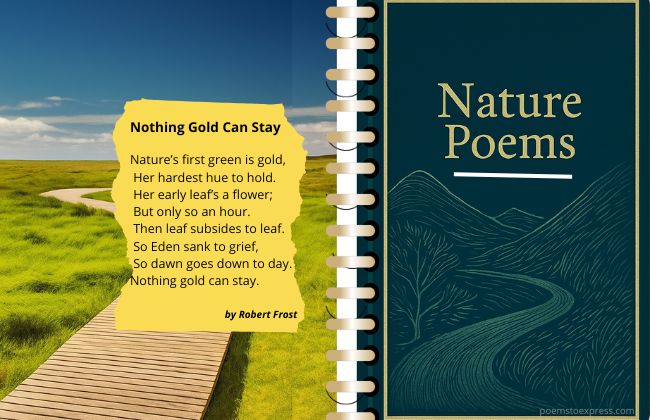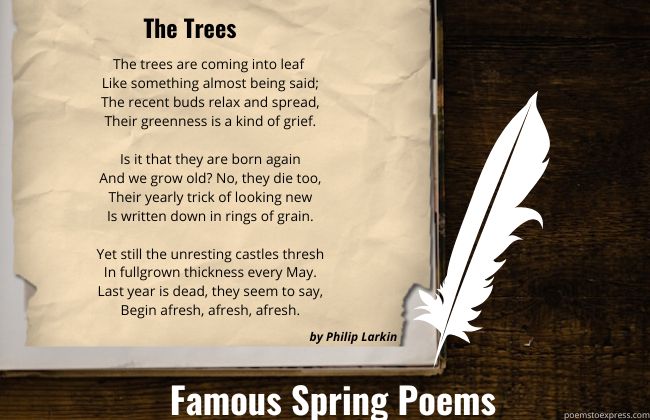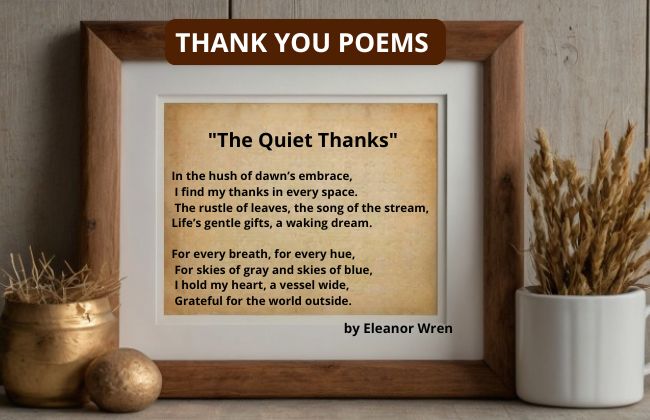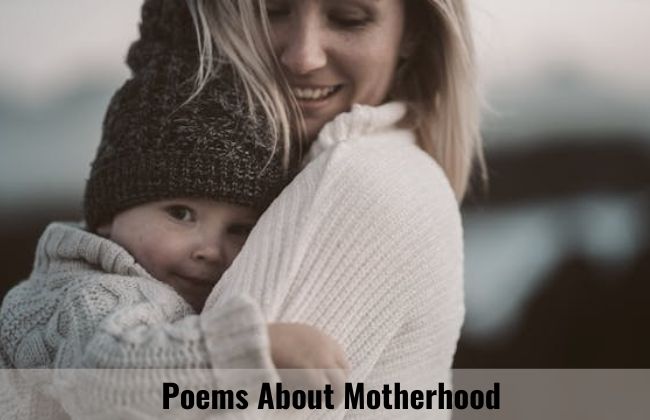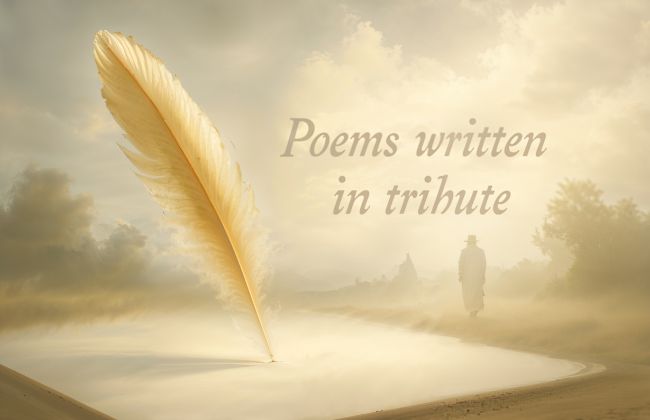Inspirational poetry holds a unique place in literature, wielding the power to move readers and evoke profound emotional responses.

These works of art distill complex emotions and ideas into accessible verses, often becoming sources of comfort, resilience, and motivation.
From the quietly stirring to the passionately rousing, inspirational poems connect with the human spirit, encouraging and challenging readers to find meaning and beauty in their lives.
Within the realm of inspirational poetry, a select few poems stand out for their enduring ability to inspire. These poems, transcending time and cultural boundaries, have become beacons for those in search of encouragement and strength.
The following selection offers a glimpse into the transformative world of inspirational poetry, showcasing the diverse ways in which poets render the stirring depths of the human experience into words.
Table of Contents
- 1 1) “The Road Not Taken” by Robert Frost
- 2 2) “Still I Rise” by Maya Angelou
- 3 3) “Invictus” by William Ernest Henley
- 4 4) “If—” by Rudyard Kipling
- 5 5) “Do Not Go Gentle into That Good Night” by Dylan Thomas
- 6 6) “The Peace of Wild Things” by Wendell Berry
- 7 7) “A Psalm of Life” by Henry Wadsworth Longfellow
- 8 8) “Phenomenal Woman” by Maya Angelou
- 9 9) “Dreams” by Langston Hughes
- 10 10) “Hope is the thing with feathers” by Emily Dickinson
- 11 The Power of Inspirational Poetry
- 12 Types of Inspirational Poems
1) “The Road Not Taken” by Robert Frost
Published in 1916, “The Road Not Taken” by Robert Frost explores the theme of choices and their ramifications. The poem begins with a traveler at a forest diverge and deliberates which path to venture down.
It encapsulates the inevitable decision-making moments in life and the longing for knowing what the unchosen path held.
The narrative is crafted with a familiar Frostian tone, combining a simple setting with profound philosophical questions.
Frost challenges readers to contemplate the consequences of their choices, considering whether the road less traveled truly makes all the difference.
Two roads diverged in a yellow wood,
And sorry I could not travel both
And be one traveler, long I stood
And looked down one as far as I could
To where it bent in the undergrowth;
Then took the other, as just as fair,
And having perhaps the better claim,
Because it was grassy and wanted wear;
Though as for that the passing there
Had worn them really about the same,
And both that morning equally lay
In leaves no step had trodden black.
Oh, I kept the first for another day!
Yet knowing how way leads on to way,
I doubted if I should ever come back.
I shall be telling this with a sigh
Somewhere ages and ages hence:
Two roads diverged in a wood, and I—
I took the one less traveled by,
And that has made all the difference.
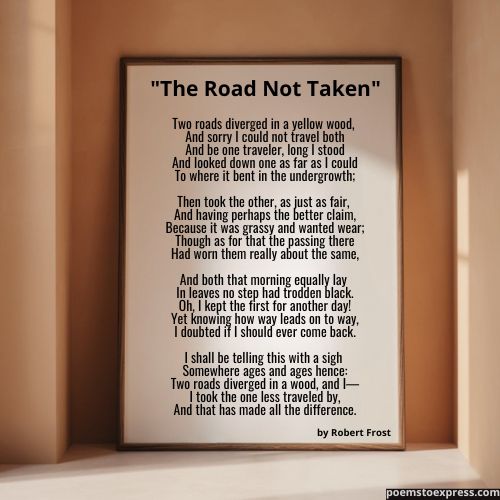
2) “Still I Rise” by Maya Angelou
“Still I Rise” is a powerful poem by Maya Angelou, encapsulating themes of resilience and optimism in the face of hardship and discrimination. The poem is a bold expression of the indomitable human spirit, particularly that of Angelou and those who have faced oppression due to their race and gender.
Through her poetic voice, she encourages individuals to embrace their identity and heritage confidently, regardless of societal challenges.
“Still I Rise” remains an influential piece in American literature and beyond, celebrated for its uplifting and timeless message.
You may write me down in history
With your bitter, twisted lies,
You may trod me in the very dirt
But still, like dust, I'll rise.
Does my sassiness upset you?
Why are you beset with gloom?
'Cause I walk like I've got oil wells
Pumping in my living room… See full poem
3) “Invictus” by William Ernest Henley
Penned in 1875 during Henley’s battle with tuberculosis of the bone, the poem was initially untitled when it appeared in his “Book of Verses.”
Henley’s personal struggles inform the poignant verses, which encapsulate the theme of undaunted courage against adversity.
Though brief, “Invictus” packs a powerful message in its 16 lines, celebrating an individual’s strength in the face of life’s trials.
The poem’s concluding lines, “I am the master of my fate, / I am the captain of my soul,” are widely quoted, epitomizing the poem’s overarching sentiment of self-mastery and inner fortitude.
Out of the night that covers me,
Black as the pit from pole to pole,
I thank whatever gods may be
For my unconquerable soul.
In the fell clutch of circumstance
I have not winced nor cried aloud.
Under the bludgeonings of chance
My head is bloody, but unbowed.
Beyond this place of wrath and tears
Looms but the Horror of the shade,
And yet the menace of the years
Finds and shall find me unafraid.
It matters not how strait the gate,
How charged with punishments the scroll,
I am the master of my fate,
I am the captain of my soul.
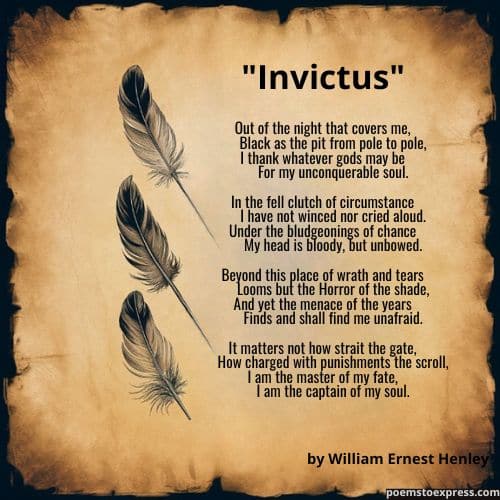
4) “If—” by Rudyard Kipling
First published in 1910, it is a paternal address to the poet’s son, offering advice on how to become a man of integrity and fortitude.
The structure, composed of four octet stanzas, presents conditional statements that challenge the reader to maintain composure in the face of adversity and doubt.
Kipling employs a conversational tone, using simple yet profound language to convey a series of hypothetical situations. One must confront these with grace and strength to achieve personal success and fulfillment.
If you can keep your head when all about you
Are losing theirs and blaming it on you,
If you can trust yourself when all men doubt you,
But make allowance for their doubting too;
If you can wait and not be tired by waiting,
Or being lied about, don’t deal in lies,
Or being hated, don’t give way to hating, … See full poem
5) “Do Not Go Gentle into That Good Night” by Dylan Thomas
Written as a villanelle, a poetic form known for its strict pattern of repetition and rhyme, the poem achieves a hauntingly insistent quality. It implores the dying, particularly Thomas’s own father, to resist the end of life with vigor and passion.
The refrain ‘Rage, rage against the dying of the light’ and ‘Do not go gentle into that good night’ resonate with the universal human desire to cling to life.
Thomas’s impassioned plea transcends personal circumstance, capturing the spirit of human resilience. As one of the most inspirational poems, it speaks to the indomitable will of the spirit in the face of the inevitable.
Do not go gentle into that good night,
Old age should burn and rave at close of day;
Rage, rage against the dying of the light.
Though wise men at their end know dark is right,
Because their words had forked no lightning they
Do not go gentle into that good night… See full poem
6) “The Peace of Wild Things” by Wendell Berry
The poem describes an individual seeking solace from everyday worries by immersing themselves in the serene presence of wildlife and still waters.
Berry’s use of language is simple yet evocative, depicting a vivid scene where a wood drake rests and a great heron feeds. The imagery suggests a tranquility that contrasts with the taxing forethought of grief experienced by humans.
It illustrates how nature provides a space free from the concerns of what the future may hold.
When despair for the world grows in me
and I wake in the night at the least sound
in fear of what my life and my children’s lives may be,
I go and lie down where the wood drake
rests in his beauty on the water, and the great heron feeds.
I come into the peace of wild things
who do not tax their lives with forethought
of grief. I come into the presence of still water.
And I feel above me the day-blind stars
waiting with their light. For a time
I rest in the grace of the world, and am free.
7) “A Psalm of Life” by Henry Wadsworth Longfellow
This piece stands out as an energetic reminder of life’s transient nature and the importance of living it with purpose and courage.
The poem is structured as a dialogue, where the voice of youth challenges the grim outlook of life as a mere dream.
Longfellow’s stanzas skillfully promote the ethos of perseverance and action, rejecting passivity. “Art is long, and Time is fleeting,” he asserts, urging readers to strive and make their mark before time runs out.
Tell me not, in mournful numbers,
Life is but an empty dream!
For the soul is dead that slumbers,
And things are not what they seem.
Life is real! Life is earnest!
And the grave is not its goal;
Dust thou art, to dust returnest,
Was not spoken of the soul… See full poem
8) “Phenomenal Woman” by Maya Angelou
This poem celebrates the confidence, strength, and inner beauty of women, challenging conventional stereotypes of beauty and allure.
Angelou describes her self-assurance and how this self-acceptance and understanding of her own worth positively influence how others perceive her.
Throughout the poem, Angelou repeats the refrain “I’m a woman / Phenomenally. / Phenomenal woman, / That’s me.” This emphasizes a message of empowerment and self-affirmation.
The poet uses her voice and physical presence as examples of how her confidence and inner strength manifest outwardly.
Pretty women wonder where my secret lies.
I'm not cute or built to suit a fashion model's size
But when I start to tell them,
They think I'm telling lies.
I say,
It's in the reach of my arms
The span of my hips,
The stride of my step,
The curl of my lips… See full poem
9) “Dreams” by Langston Hughes
“Dreams” is a compelling poem by Langston Hughes that emphasizes the importance of holding onto dreams.
First published in 1923, the poem consists of two quatrains that convey a simple yet profound message: life without dreams is bleak and barren.
Langston Hughes uses the metaphor of a “broken-winged bird” that cannot fly to illustrate the crippling effect of lost dreams.
Hughes’ poetry often deals with themes of hope and resilience, particularly in the face of adversity, which is reflected in the encouraging tone of “Dreams.”
Hold fast to dreams
For if dreams die
Life is a broken-winged bird
That cannot fly.
Hold fast to dreams
For when dreams go
Life is a barren field
Frozen with snow.
10) “Hope is the thing with feathers” by Emily Dickinson
In this brief but powerful work, Dickinson utilizes the metaphor of a small bird to symbolize hope residing in the soul, which sings unceasingly.
The bird’s song, heard regardless of the prevailing conditions, encapsulates the resilience and persistence of hope.
The poem is renowned for its simplicity and depth, suggesting that hope requires no complex language to be understood or felt; it is a universal experience.
Despite its delicate form, hope emerges in the poem as an unfaltering presence that warms and inspires, making it a potent source of strength for many.
Hope is the thing with feathers
That perches in the soul,
And sings the tune without the words,
And never stops at all,
And sweetest in the gale is heard;
And sore must be the storm
That could abash the little bird
That kept so many warm.
I've heard it in the chillest land,
And on the strangest sea;
Yet, never, in extremity,
It asked a crumb of me.
The Power of Inspirational Poetry
1. Impact on Emotions
Inspirational poems are often lauded for their capability to evoke strong emotional responses.
Poems like Maya Angelou’s “Still I Rise” powerfully convey themes of resilience and triumph, which inspire and uplift audiences.
- Emotional Resilience: Empowering individuals to face adversity with a renewed sense of courage.
- Hope and Encouragement: Offering comfort and motivation during challenging times.
2. Enhancing Creativity
The structure and language of poetry can also inspire creative thought. Poetic imagery and metaphor engage the imagination, prompting readers to envision possibilities beyond their current circumstances.
- Imaginative Stimulation: Sparking the creation of vivid mental pictures and innovative ideas.
- Expressive Freedom: Encouraging readers to explore and articulate their thoughts in new and expressive ways.
Types of Inspirational Poems
Inspirational poems come in various forms, each with its unique way of uplifting and motivating readers.
1. Motivational Poems
Motivational poems are designed to encourage and energize the reader. They often focus on themes of perseverance, determination, and the strength to overcome obstacles.
These poems aim to ignite a spark within the reader, pushing them to take action and pursue their goals.
Examples:
- “If—” by Rudyard Kipling
- “Don’t Quit” by Edgar A. Guest
Key Characteristics:
- Strong, affirmative language
- Rhythmic and often rhyming structure
- Direct calls to action or advice
2. Spiritual Poems
Spiritual poems delve into themes of faith, inner peace, and the connection between the human soul and a higher power.
These poems often provide comfort and solace, helping readers find strength in their spiritual beliefs.
Examples:
- “The Peace of Wild Things” by Wendell Berry
- “A Prayer in Spring” by Robert Frost
Key Characteristics:
- Reflective and contemplative tone
- Use of nature and the divine as metaphors
- Emphasis on inner tranquility and faith
3. Poems of Hope and Resilience
Poems of hope and resilience focus on the human capacity to endure hardships and emerge stronger.
They often tell stories of overcoming adversity, offering a message of hope and the promise of a brighter future.
Examples:
- “Still I Rise” by Maya Angelou
- “Invictus” by William Ernest Henley
Key Characteristics:
- Narrative elements that tell a story of struggle and triumph
- Emotive and powerful language
- Themes of endurance and the human spirit
You might also like:

